I’ve put together some smaller trips to Hakone, Yokohama, Kamakura and Nikko into this final post in my Eating in Japan series, even though I didn’t actually travel in this order. Following on from Eating in Japan – Kyoto Part 2, we took a train and ferry to Hakone. My sister and I both bought ekibens to eat on the train. Mine was about ¥1,000 and I ate everything except for the jelly in the middle (it was too hard to eat with chopsticks). I love the assortment of ekibens!

My sister’s ekiben cost about ¥780 and had a lot more rice in it.
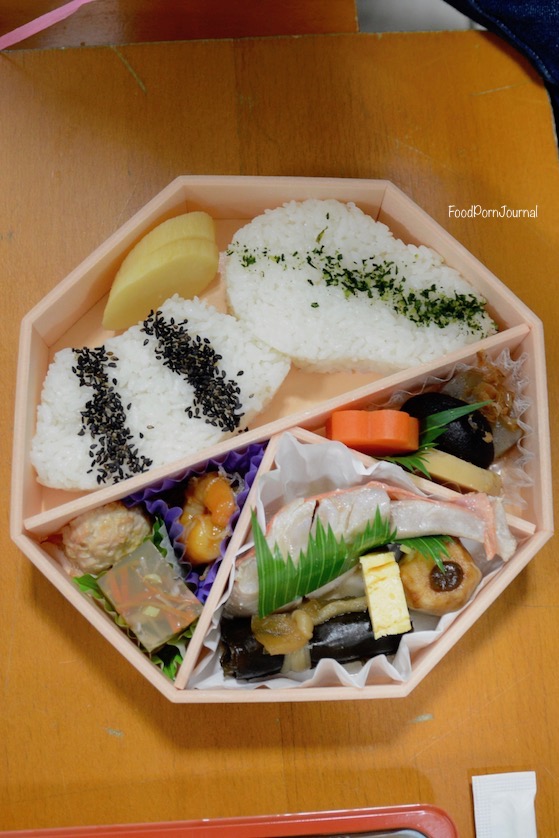
Hakone
After our stay in Kyoto, we wanted to stay overnight in Hakone to catch a glimpse of Mt Fuji. We had to catch a ferry which looked pretty spiffy and it took under an hour to get across to the other side of Lake Ashinoko.

Unfortunately, it was far too foggy to see 10 metres in front, let alone Mt Fuji, so we were both devastated that we had traveled all that way to not see anything.

We headed back to our ryokan, Ashinoko Ichinoyu, to relax and freshen up. Dinner was included in our accommodation and it was plentiful with a pot bubbling away with a broth made of mushrooms, cabbage and chives, steamed vegetables served in a bamboo steamer, sashimi three-ways, and slices of beef on a sizzle plate.

We didn’t do much after dinner and that gave us a chance to do laundry, catch up on news and sort through our hundreds of photos. Breakfast at the ryokan the next day included salted fish, a boiled egg, pickled vegetables, miso soup, rice and natto.

What is natto? It’s basically fermented soy beans which have a slimy, sticky and stringy texture. Natto is usually meant to smell a bit like strong cheese but I found this one didn’t have an overly strong smell. Some say it’s the Japanese version of Vegemite – you either love it or hate it. I actually didn’t think it was that bad (note that I love Vegemite and it was nowhere near as pungent as that), but I only ate half of it.

Luckily it was blue skies in the morning, so we took the cable car up again to get a shot of Mt Fuji. Beautiful!

It was a very short trip and it was time to leave again. The small shop at the ferry terminal had a good range of snacks like these huge seaweed crackers.

Wasabi beer was on sale as well as cherry blossom beer.

I purchased a box of wasabi Kit Kats to take home with me. I didn’t like them as they were distinctly wasabi-flavoured, but hey it had to be tested!

I left with a Hakone Bakery curry doughnut – the doughnut was coloured with squid ink giving it a savoury and slightly salty flavour.

Yokohama
We stayed in Yokohama for two nights as we wanted to do a day trip out to Kamakura. Did you know that Yokohama has the largest Chinatown in Japan?

We had no plans that morning so we took our time strolling around. I saw these steamed buns with some rather sad looking pandas painted on them.

These were large buns filled with pork mince. They were nothing spectacular and I remember thinking it could have used some vinegar dipping sauce. The bun had been placed in the steamer for too long so that the bottom was a little soggy too.

To be honest, we didn’t go all the way to Japan to try Chinese food, so we left Chinatown in the hunt for some yummy Japanese food. We found a small brightly coloured ramen shop, which looked to be a chain store. We both purchased the No. 1 ramen advertised on the menu ‘Max Ramen’ for ¥980. You order via a vending machine and provide the receipt to a staff member who confirms your order, provides you with flavour options (light, medium, strong), and ramen texture options (soft, medium, hard). I went with medium for both.

For an eatery we stumbled across, I was really happy with the quality. A thick chicken broth, 3 pieces of deliciously soft pork belly, a quail egg, a regular hard boiled hens egg and seaweed. Too bad i have no idea what the restaurant was called as it was all in Japanese. The broth wasn’t too thick, but it had a beautiful creaminess to it with plenty of flavour. Not the cheapest ramen but good quality, fast and delicious.

We had no planned sightseeing that day, so we wandered throughout the very large city. We walked by Yokohama Landmark Tower which turned out to be the second tallest building in Japan. We bought admission tickets and caught the elevator to the top.
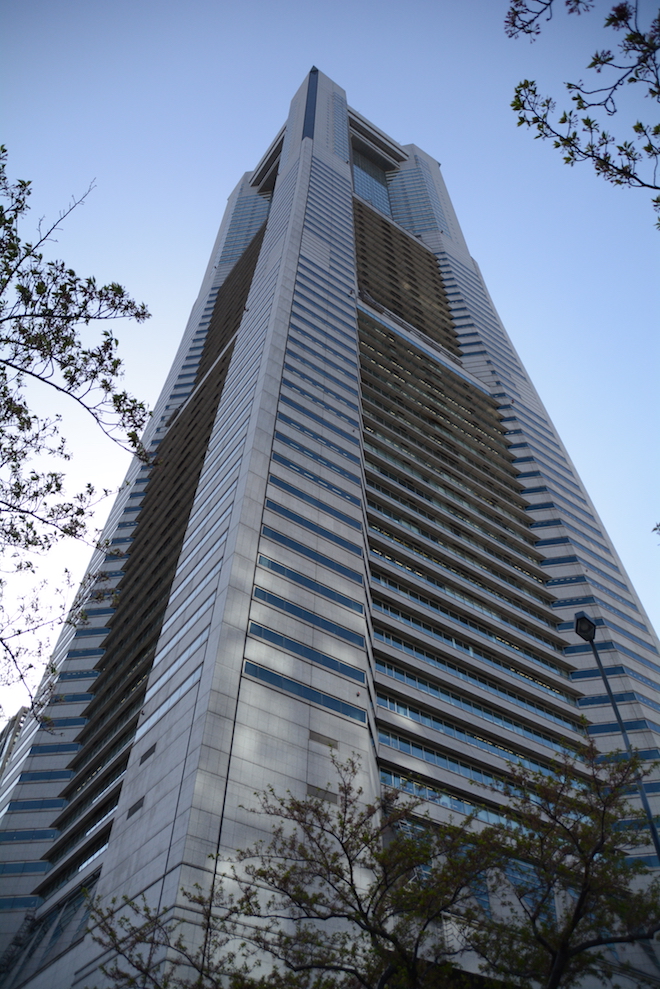
The views were lovely and we could see the whole man made island of Minato Mirai with its amusement park and ferris wheel, hotels and shopping centres.

I was very happy to discover that the cafe at the top of the Landmark building sold Cremia. I had walked by a few cafes during my trip selling Cremia but had always been too full to try it. Time was also running out as we were reaching the end of our trip. Luckily, the Landmark Building cafe was one of the few places I had come across to sell a double serve! Much excitement! Cremia is a soft cream consisting of 12.5% Hokkaido milk plus 25% Hokkaido whipped cream. There was only a subtle hint of cheesiness and I could immediately taste the high quality of the soft cream. It was AMAZING – so smooth, silky and creamy. Like nothing I’ve ever tasted before. The way the ice cream is poured into vertical waves is based on an image of silk. The cone is different to your regular wafer cones. It’s made from langue de chat, a buttery yet sweet biscuit twisted into a cone. What luxury! The double serve version with heart shaped chocolates on it was ¥980 (AUD$11.70). It is more expensive than regular ice cream you could get for ¥300, a regular sized cremia was about ¥550, but it is definitely worth a try.

Our accommodation was close to the Yokohama train station, which was large and filled with eateries so my sister and I headed there for dinner. We ended up splitting up for dinner as she wanted a burger, and I wanted to keep eating Japanese food. I forgot the name of the restaurant, but I believe it cost ¥1,000 for a dinner set of pork cutlet with egg in a rice bowl, cold soba dipping noodles with pickled vegetables and warm tea. A very filling meal!
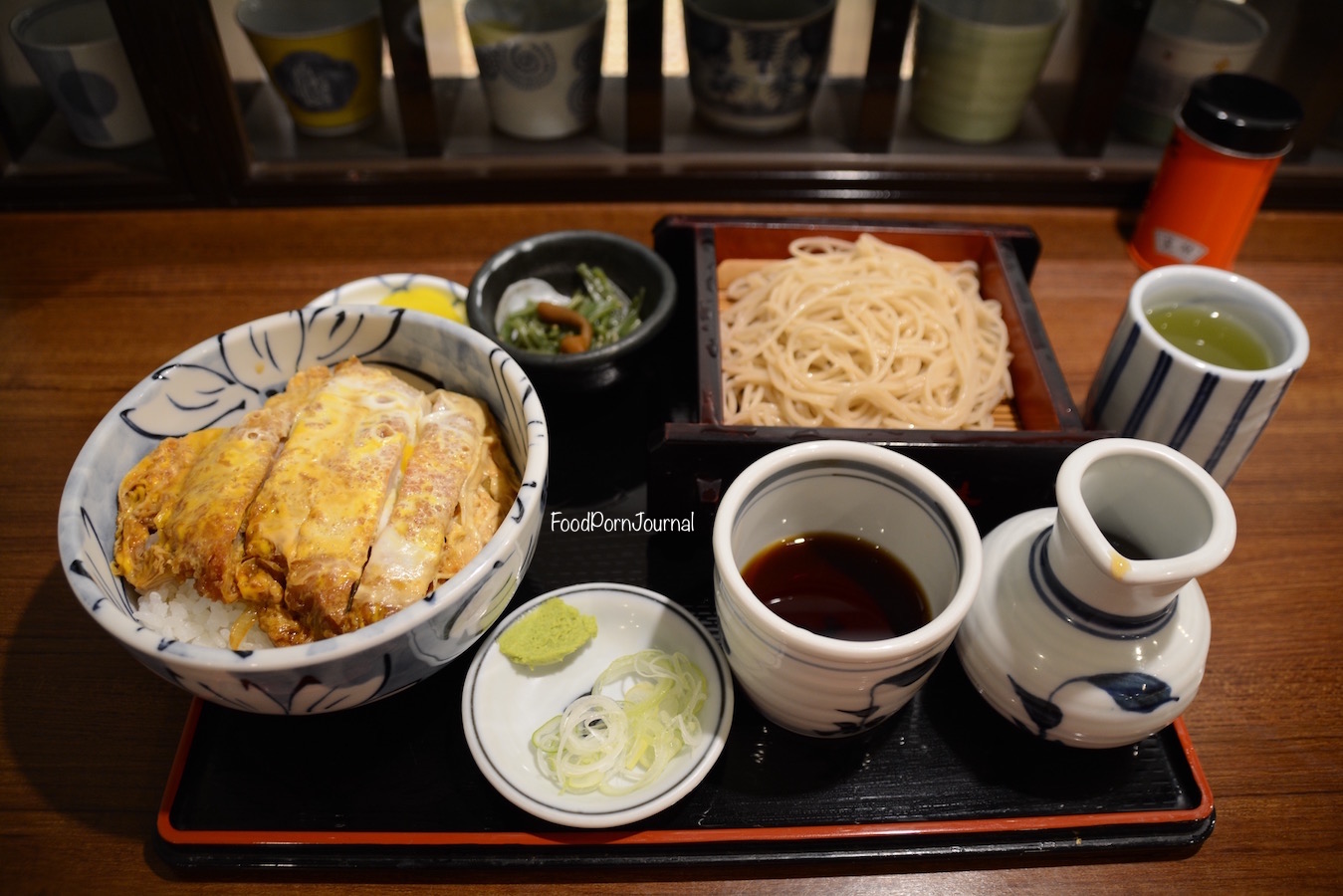
After our day trip to Kamakura the next day (more on that below), we were back in Yokohama to search for that night’s dinner. We wandered towards the Red Brick Warehouse boasting a variety of retail shops and eateries including Bills (by Australia’s own Bill Granger). It was just after Easter, so the gardens in between the buildings had been decorated with Easter decor.
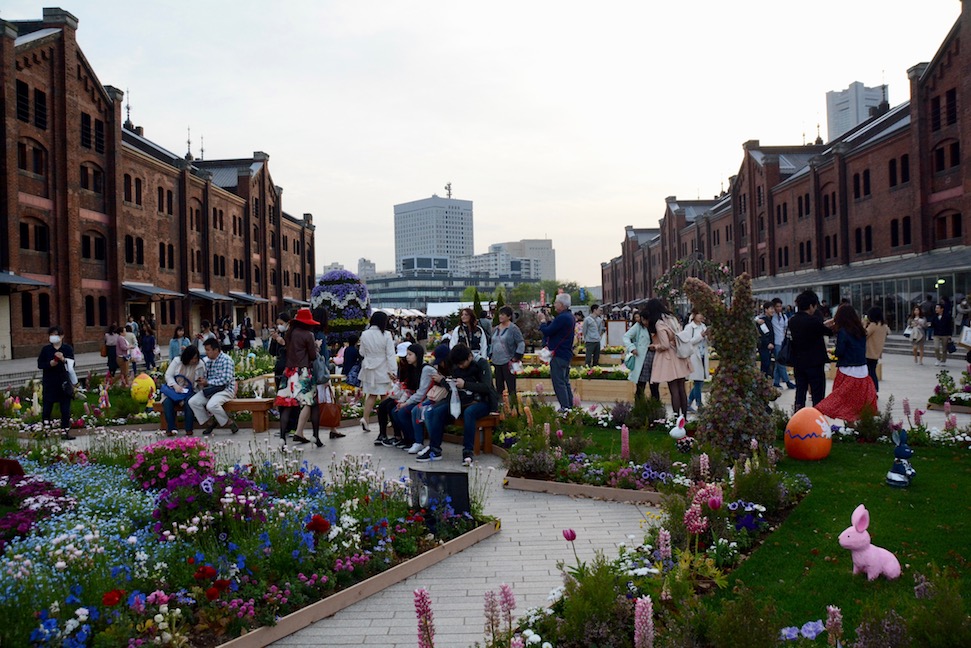
I ordered a crumbed pork cutlet with omelette and gravy. I loved the crunchiness around the pork but didn’t particularly like the soy sauce-like gravy.

Kamakura
From Yokohama, we caught the local train into the small seaside village of Kamakura to see the Great Buddha (Daibatsu).

On the way, we passed a small shop selling fried sweet croquettes. I tried the matcha cream croquette while my sister tried the sweet potato cream croquette. I loved the warm gooey creamy centres!

We walked down the main shopping street Komachi Dori in Kamakura which had so many things to snack on!

There was a dango shop selling all sorts of flavours including dessert dango! I could have filled up at this shop that usually has a queue out the door.

I chose the strawberry dango which I much prefer to the savoury ones. My sister chose the chestnut.

There was a nut shop shop that had so many different flavoured nuts and a massive sampling tray at the front.

The famous Kamakura Hangetsu shop was also on this street. The shop is famous for its thin biscuits shaped in a half moon with different fillings and these are sold all over Japan.

I purchased the six pack with three matcha and three red bean flavours. Peanut had recently been introduced too. I loved them so much! The wafer thin biscuits had a beautiful just baked taste to them with a thin layer of flavoured cream in between. So addictive that I bought a 12-pack including the peanut flavour at the Haneda airport before I left to fly back to Australia. I savoured every bite. Perfect with a cup of tea.

We watched a lady make kintsuba, a Japanese sweet that comes in lots of flavours like pumpkin, sakura, sweet potato, matcha etc with a few nuts covered in really thin soft batter. I chose the pumpkin but it just tasted like sugar to me.

The sign out the front showed the list of flavours and prices.

I saw a stall selling taiyaki filled with white bait. I wasn’t game enough to try it but it did look interesting.

The Sugi honey shop was very popular with the tourists.

It was lunch time, and we joined the queue at a small udon shop, Kamakura Udon, down another alley off Komachi Dori. There was no English name over the blue flags above the door, but I managed to grab a business card on the way out with the Kamakura Udon website on it.

The eatery was small with just a few seats around the counter. Peeking in between the white curtains leading into the kitchen, my sister and I could see the freshly made udon being stretched and pulled into shape. It was fascinating to watch.

I ordered the Torijiru udon which came with cold Zaru udon noodles and a hot chicken broth to dip the udon into. There was a noticeable difference with the udon which was chewy but had the perfect amount of resistance (in my opinion). I loved it! This was the best and freshest udon I’ve ever tried.
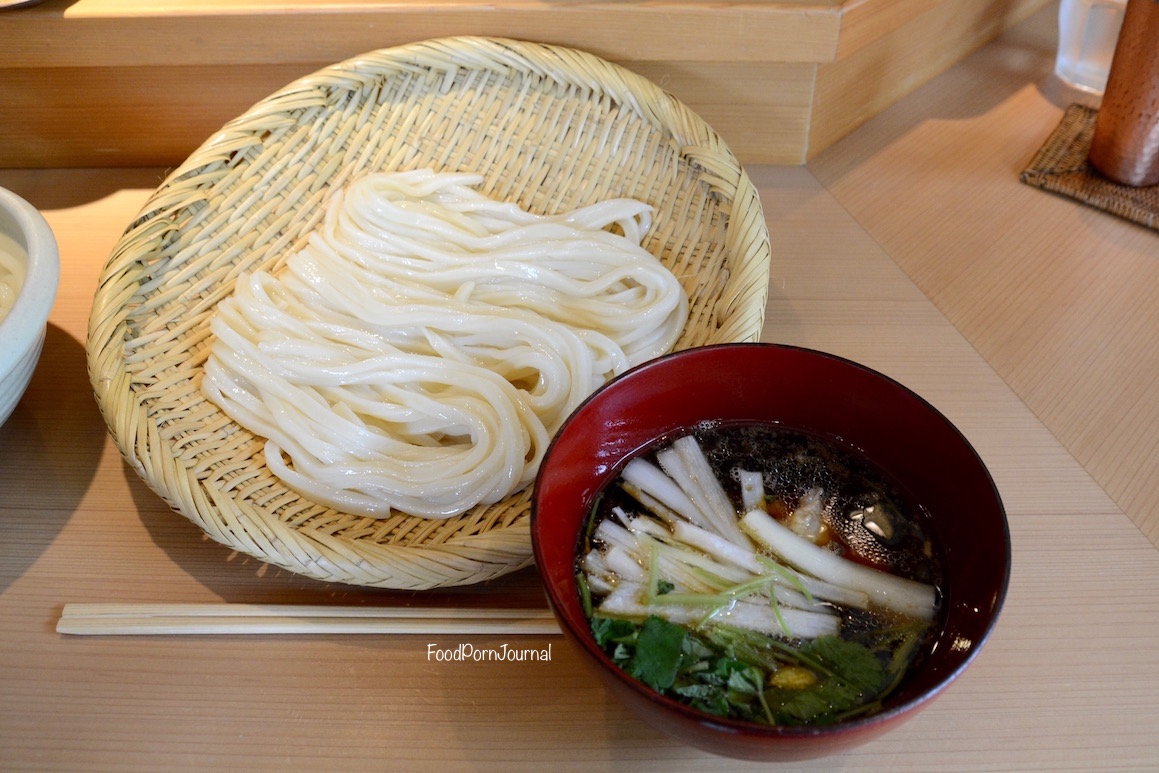
After our udon lunch, we found a little patisserie, Yukinoshita, down an alley off Komachi Dori.
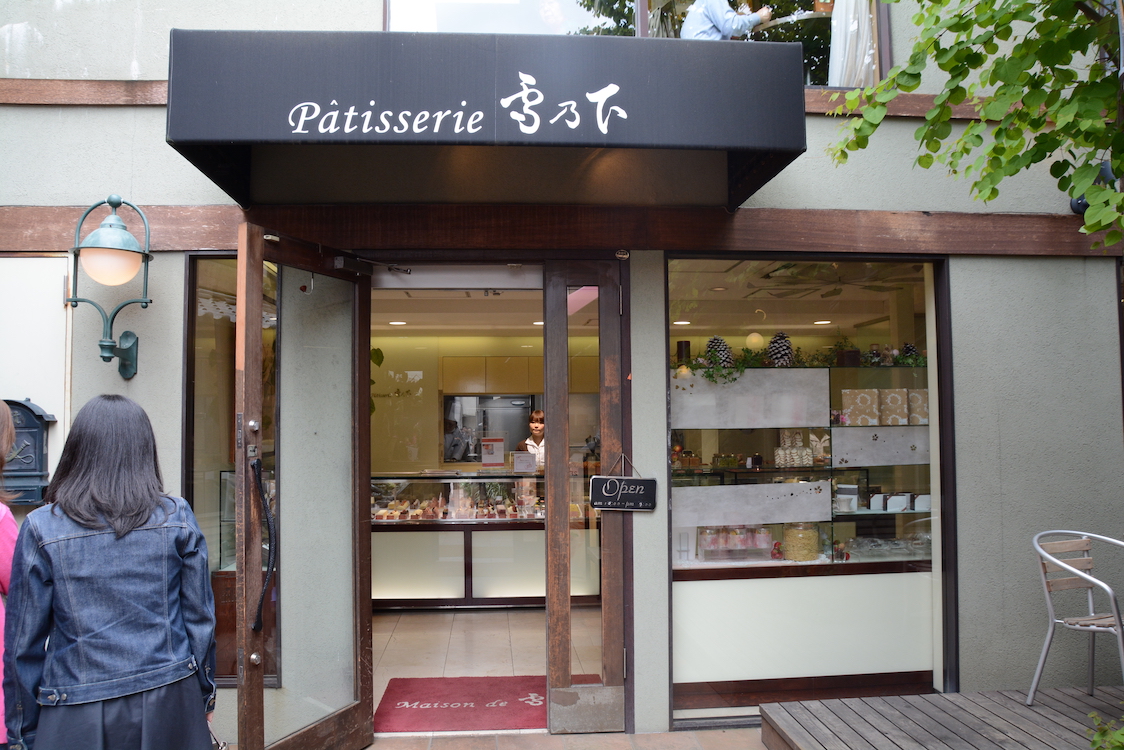
There were plenty of small cakes, macarons and pastries to umm and ahh over.

We chose the sakura tart with sakura mousse, some whipped cream and pistachio sponge inside. Very light and heavenly.

I had to try the Bonsai – which was a matcha tiramisu with layers of matcha sponge and cream inside. As much as I love matcha, this wasn’t as good as the regular tiramisu.

We also tried a chocolate and raspberry slice and a sakura macaron. The chocolate wasn’t as chocolatey as I would have liked, but it did go well with the raspberry glaze on top. The macaron had a lovely texture but I honestly couldn’t taste the sakura in it.

After afternoon tea, we kept strolling. Kamakura Chacha sold so many types of matcha soft serve and gelato. There were 5 levels of matcha gelato ranging from a light matcha flavour to a strong matcha flavour, as well as 4 levels of matcha soft serve. I was too full from the cakes to give it a try, but am really wishing I did it anyway.

In the same alley as the udon shop, we found a cafe specialising in latte art. There was a sign at the entrance of the alley with photos of the latte art work.

A selection of coffees with latte art were Y600 (about AUD$7.20!) but I had to try one. I wasn’t asked what kind of art I wanted nor did I make a suggestion. Out came a work of anime art. I was just blown away by how gorgeous it was! Yes it was an expensive coffee, and a bit watery for my tastes, but the barista has some mad latte art skills. The table next to us got a Hello Kitty artwork. I was really ecstatic with mine, so much better than a Hello Kitty that’s for sure!

Nikko
From Tokyo, we did a day trip to visit the small town of Nikko, about an hour train ride away. Nikko is famous for making yuba – tofu skins made form skimming the top of boiled soybean milk and then dried. There were a few shops outside the train station and we passed by a stall selling fried yuba manju – a fried tofu croquette. The yuba was mixed in with the batter and I believe there was only one filling inside, red bean paste, but I was happy with that.

The yuba manju were extremely hot, with a delicious crunchy batter and soft smooth red bean inside. A delight for winter.

We headed to the tourist information centre and picked up a map of the town which pointed out several restaurants on the way to Toshogu, a famous Shinto shrine. We stopped about a third to half way to the shrine at a small restaurant that made yuba three ways. My sister and I both ordered udon noodles with the three types of yuba.
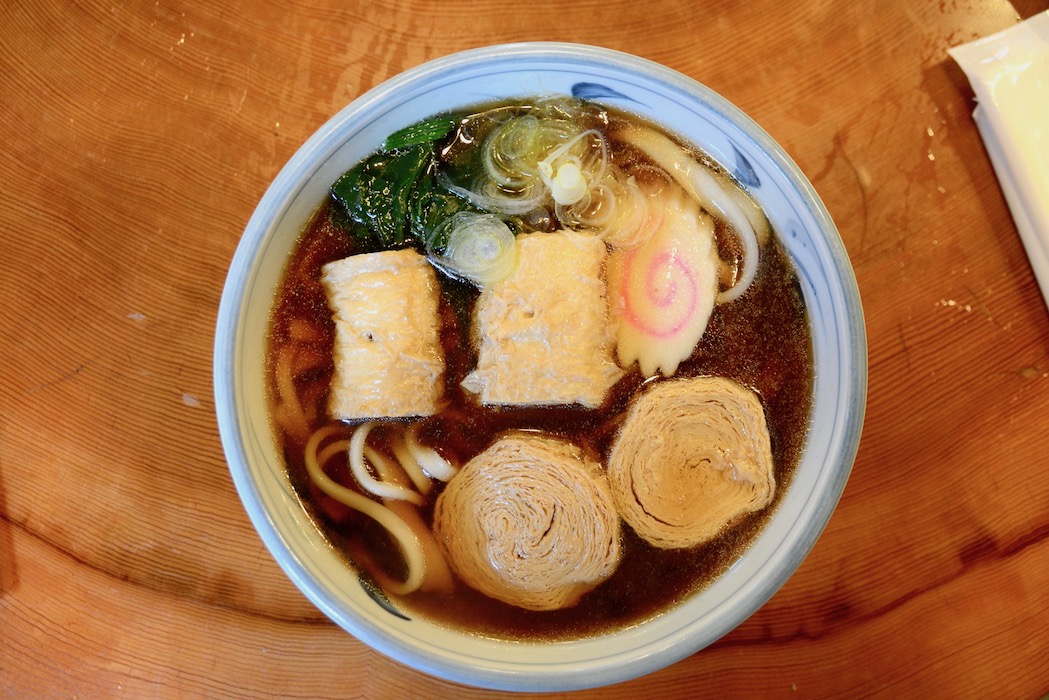
The first piece of yuba (we actually received two pieces of this) was one long strip rolled tightly into a roll. It did just taste like tofu skin.

Another piece consisted of yuba wrapped around what seemed like thick noodles. I really couldn’t taste much flavour so it was hard to figure out. The final piece was yuba wrapped around soft tofu. The dark broth was delicious and provided the much needed flavour required.

We also ordered some drinks – I tried the non-alcoholic beer (which tasted like beer to me, so I didn’t finish it) while my sister tried a non-alcoholic Nikko cider.

After lunch, we walked to Toshogu. Unfortunately, most of it was under renovation but we did manage to get a couple of good shots in.

We also walked to Kammangafuchi Gorge. It took a while to get there but the serenity of the place was worth it. We had the place (almost) to ourselves with the sound of the gushing river on one side and the Jizo statues on the other. The top of the river held a small gazebo high up on the rocks – it took a bit of scrambling to get to it, but it had a lovely view of the river and some people were meditating.

It was time to slowly walk back into the main city and head back into Tokyo. We did make one last stop at a tourist outlet when I saw tofu ice cream being sold at a stand. The ice cream wasn’t as soft and smooth as others I’ve had, I guess because there’s less fat and no dairy. It actually tasted more like the Asian soy milk my parents would always buy growing up (a lot sweeter than regular soy milk) so it brought on some happy memories.

And folks, that is it for my adventures in Japan! It took over a year to get it all written up on the blog but it’s finally done! I hope you enjoyed going through it as much as I did. There is so much more to Japan that I would love to discover and taste. A country I could happily revisit again and again.
Here are the links to the other chapters of my Eating in Japan series:
- Eating in Tokyo – Part 1 – Tsukiji Markets
- Eating in Tokyo – Part 2 – Shibuya and Harajuku
- Eating in Tokyo – Part 3 – More markets and depachikas
- Eating in Tokyo – Part 4 – Shinjuku and Ginza
- Eating in Tokyo – Part 5 – Narisawa
- Eating in Tokyo – Part 6 – Akihabara, Roppongi, Odaiba
- Eating in Japan – Nagano and Matsumoto
- Eating in Japan – Tsumago, Takayama and Shirakawa-Go
- Eating in Japan – Kanazawa and Hiroshima
- Eating in Japan – Miyajima Island
- Eating in Japan – Osaka
- Eating in Japan – Koyasan (Mt Koya)
- Eating in Japan – Kyoto – Part 1
- Eating in Japan – Kyoto – Part 2
If you want more random photos and updates about food, I’m on Facebook, Twitter and Instagram:
Facebook: /foodpornjournal
Twitter: @foodpornjournal
Instagram: /foodpornjournal
